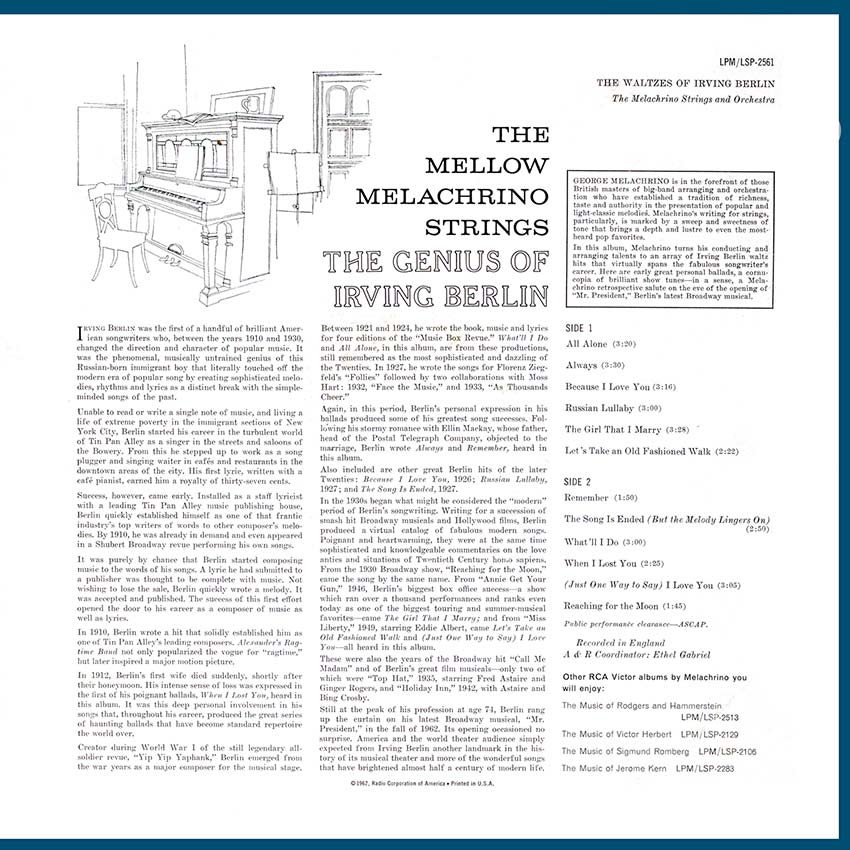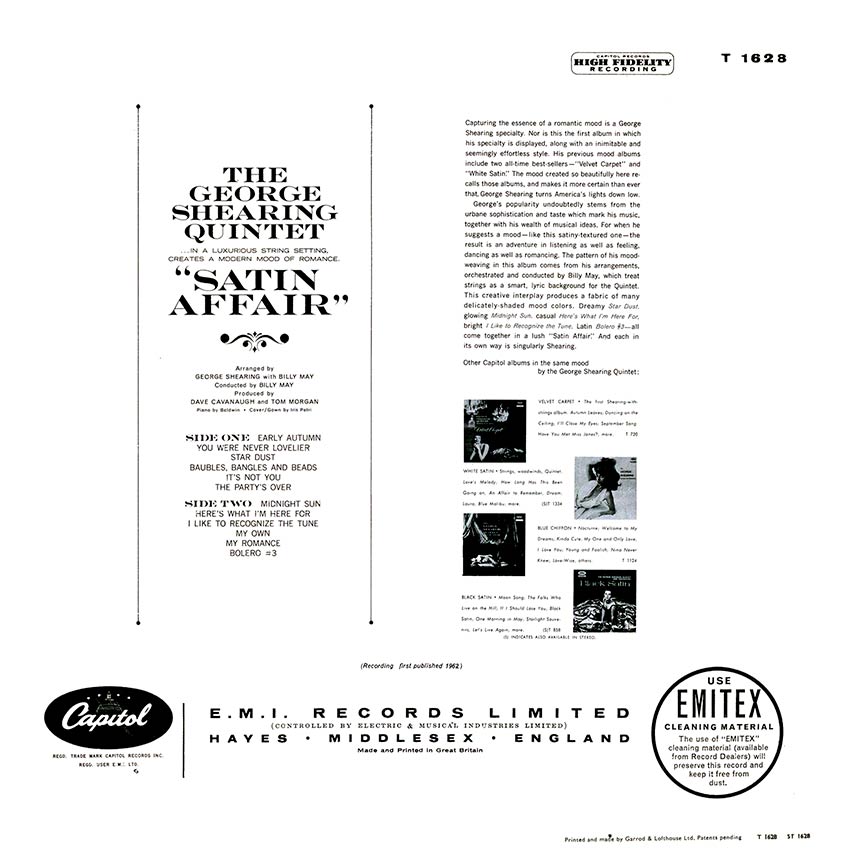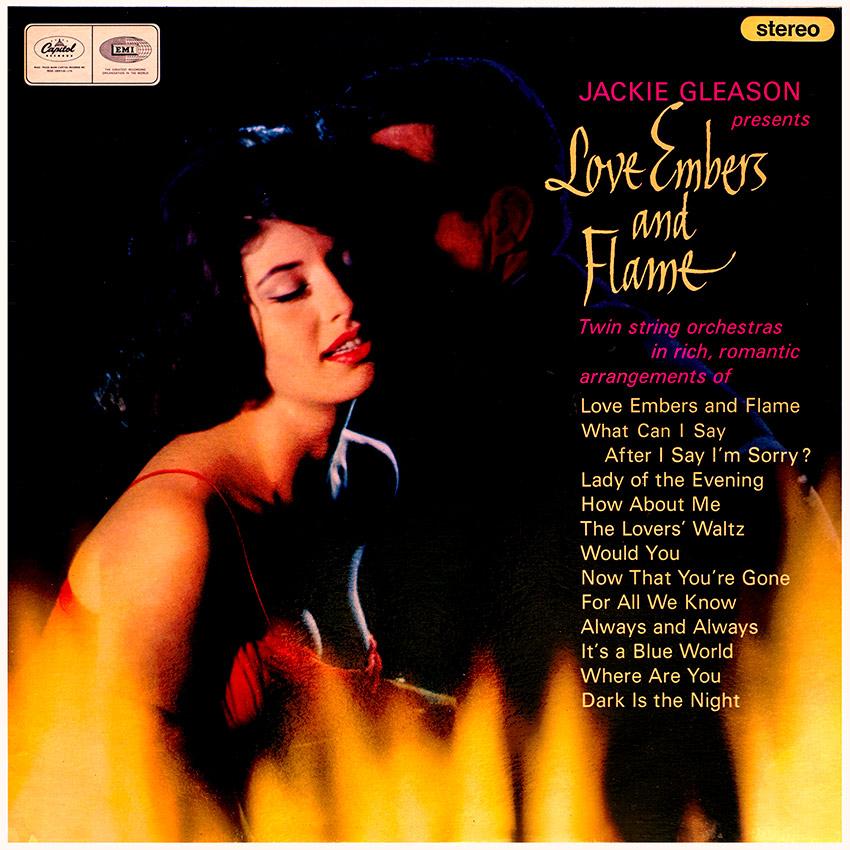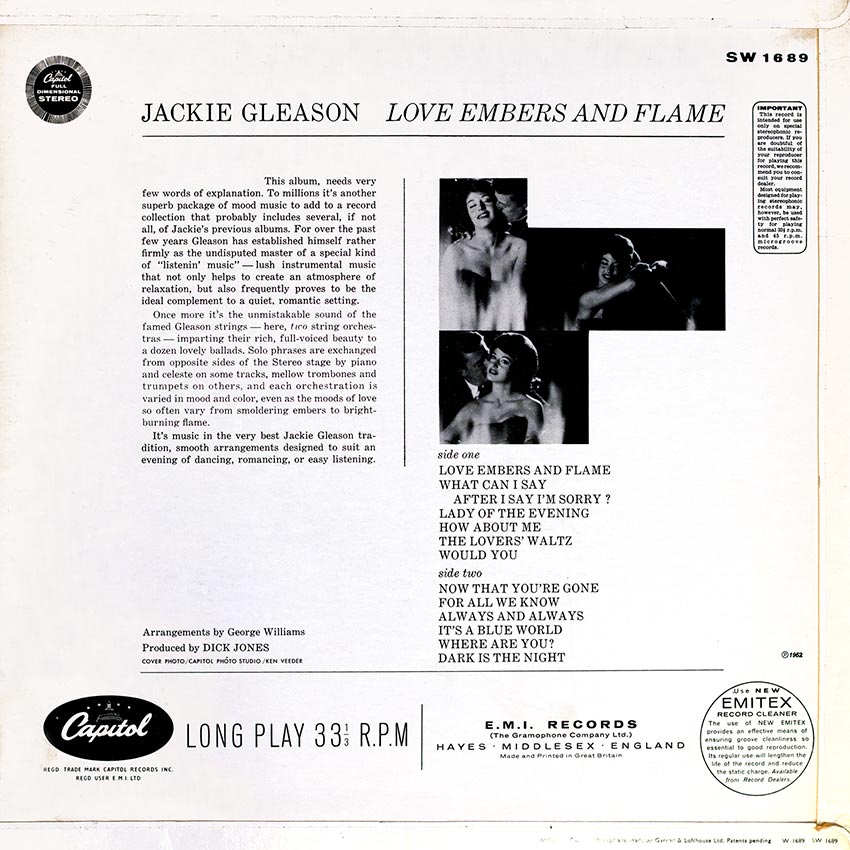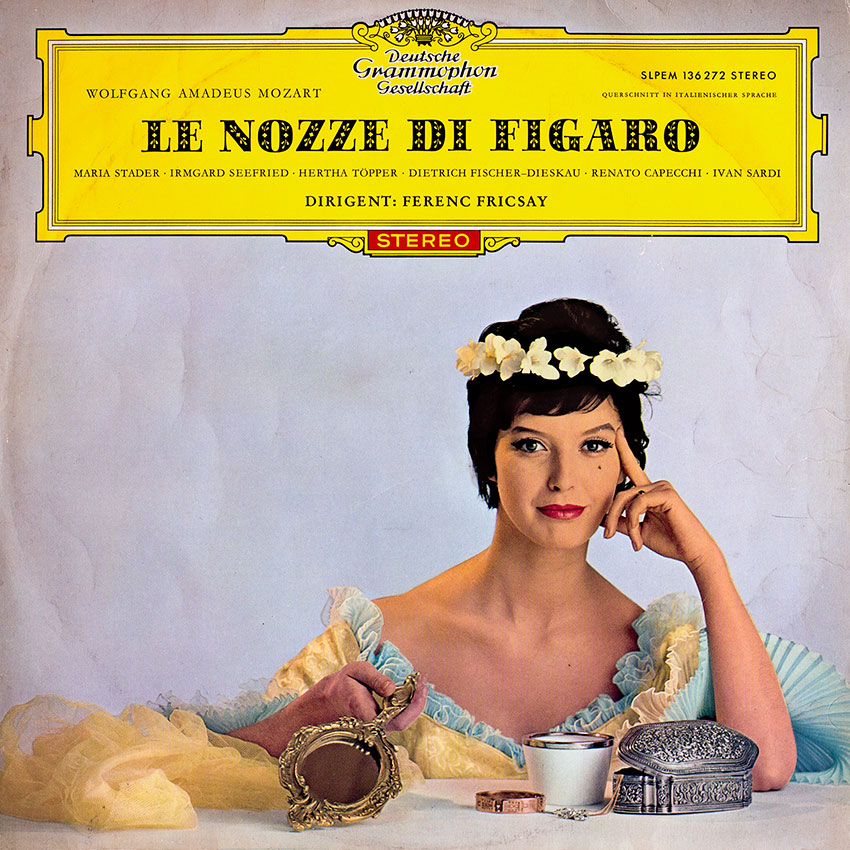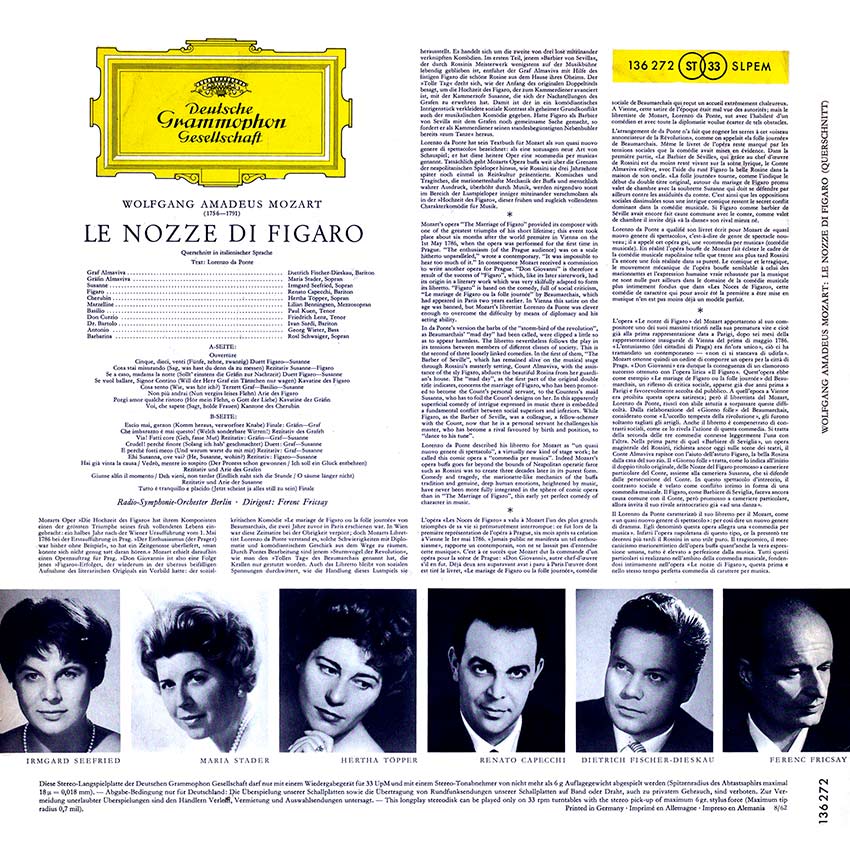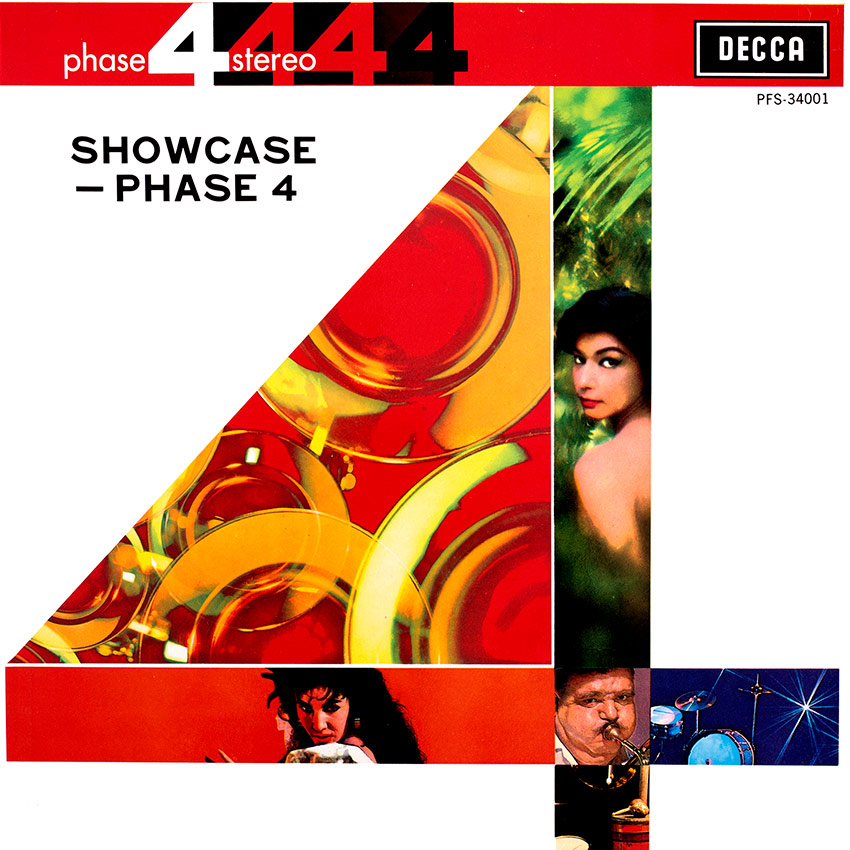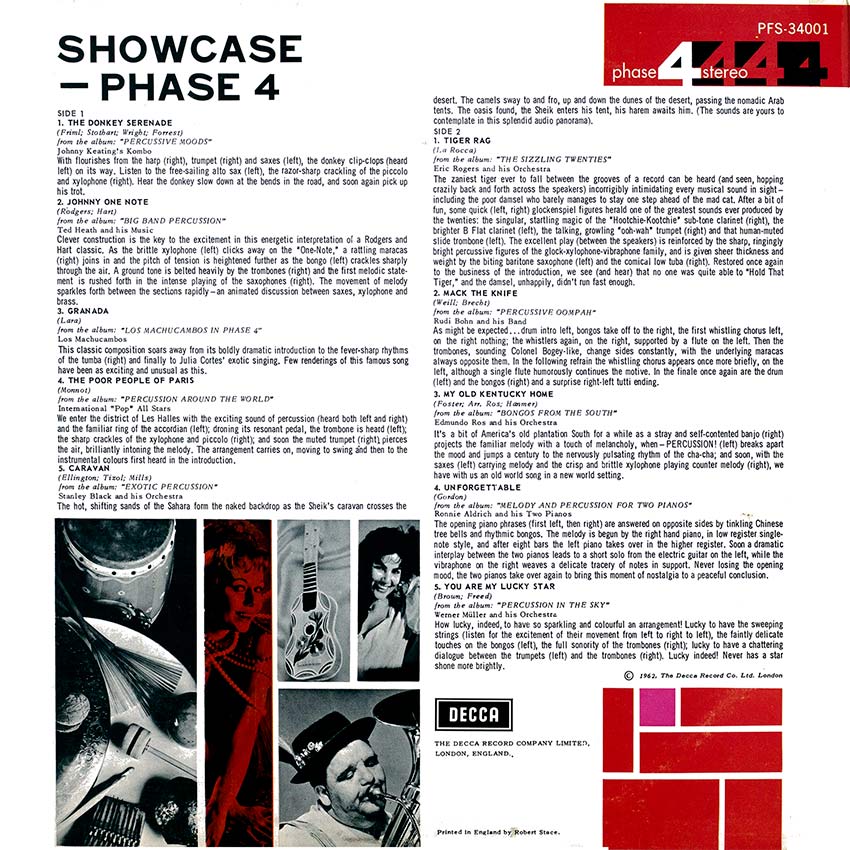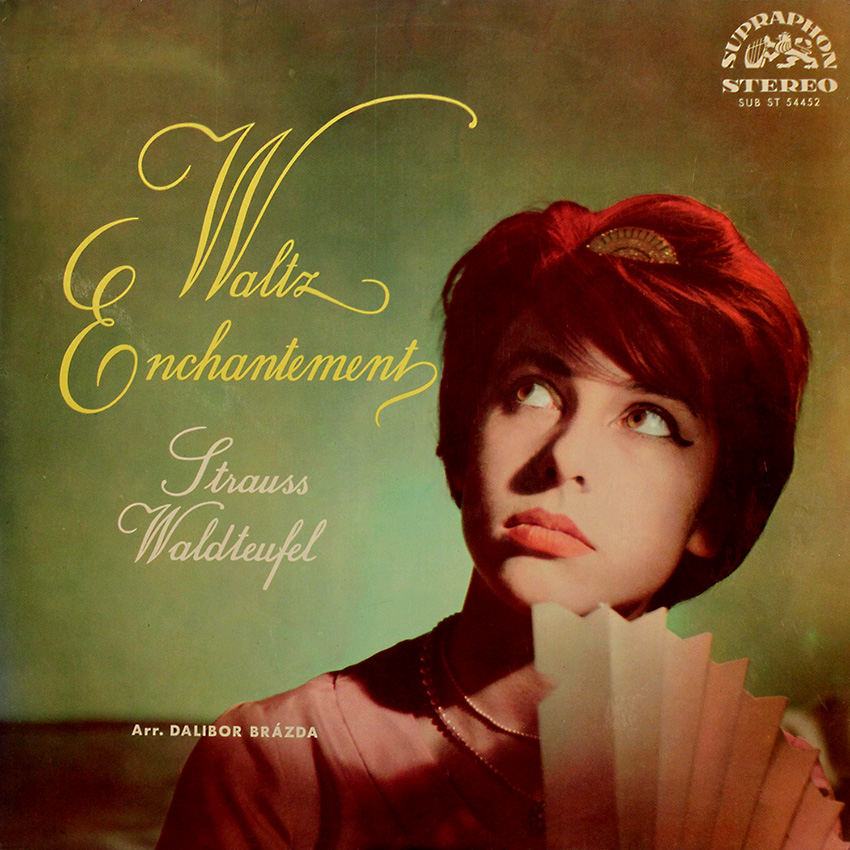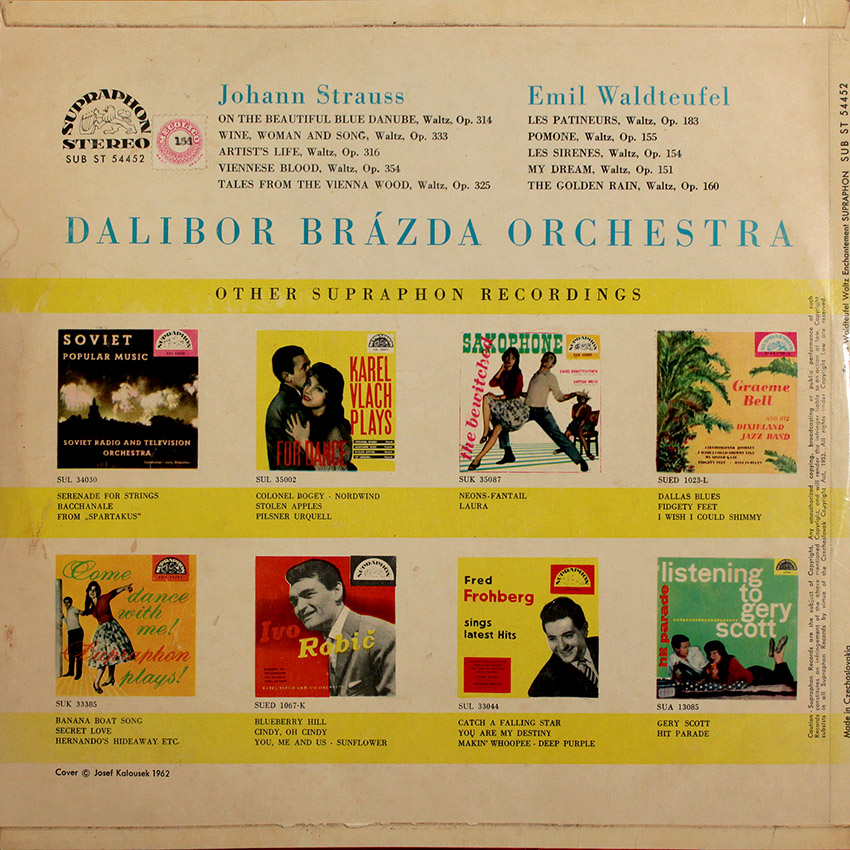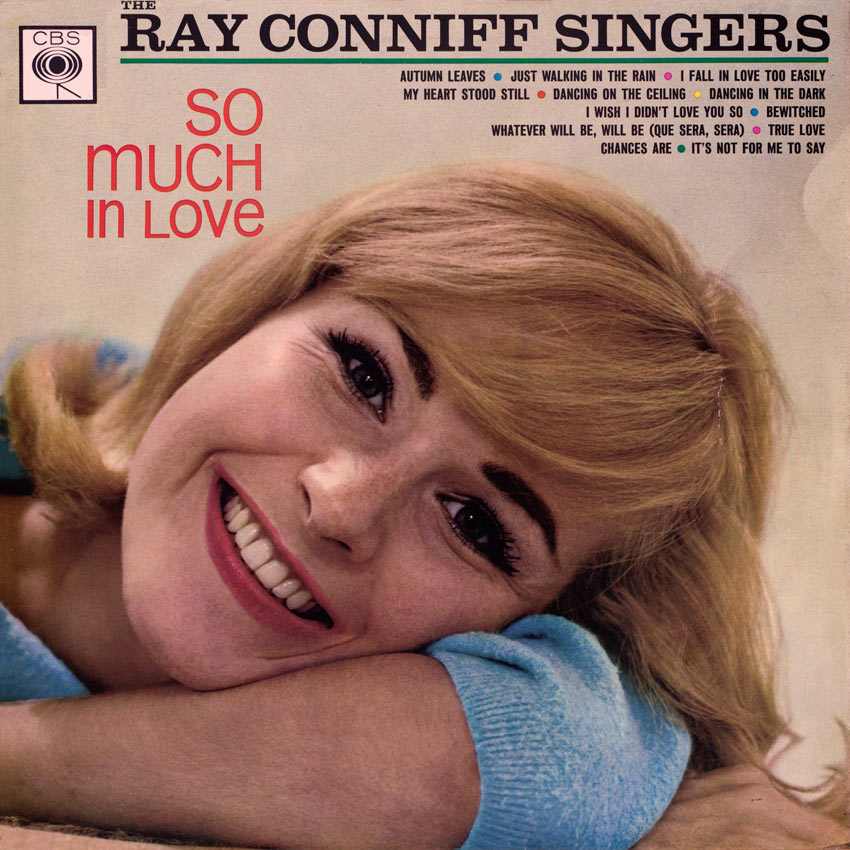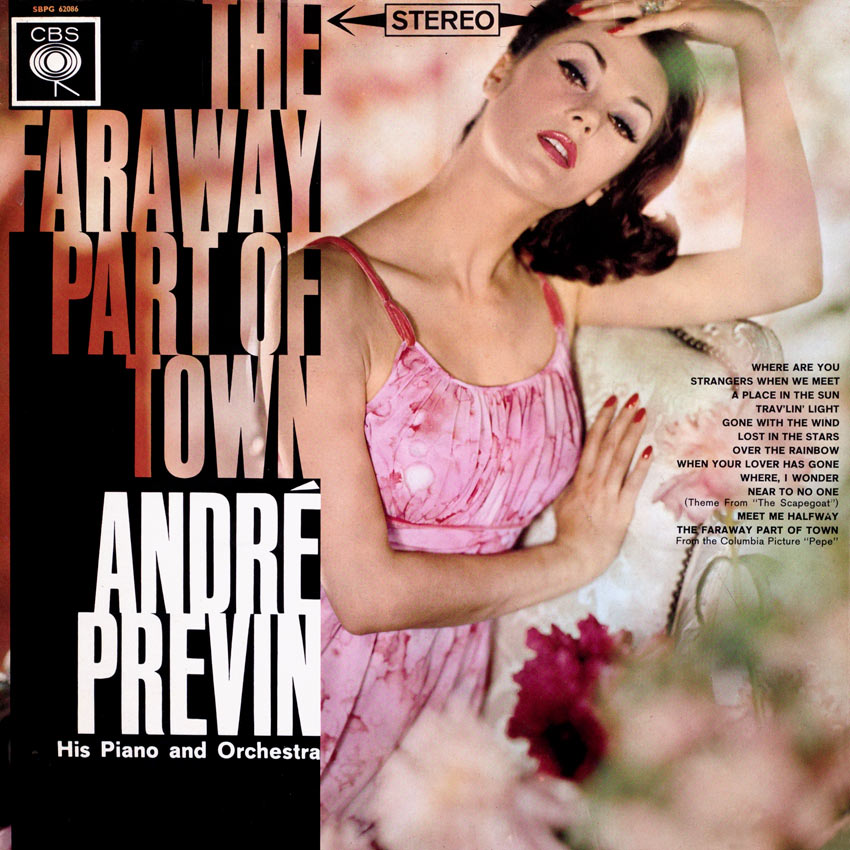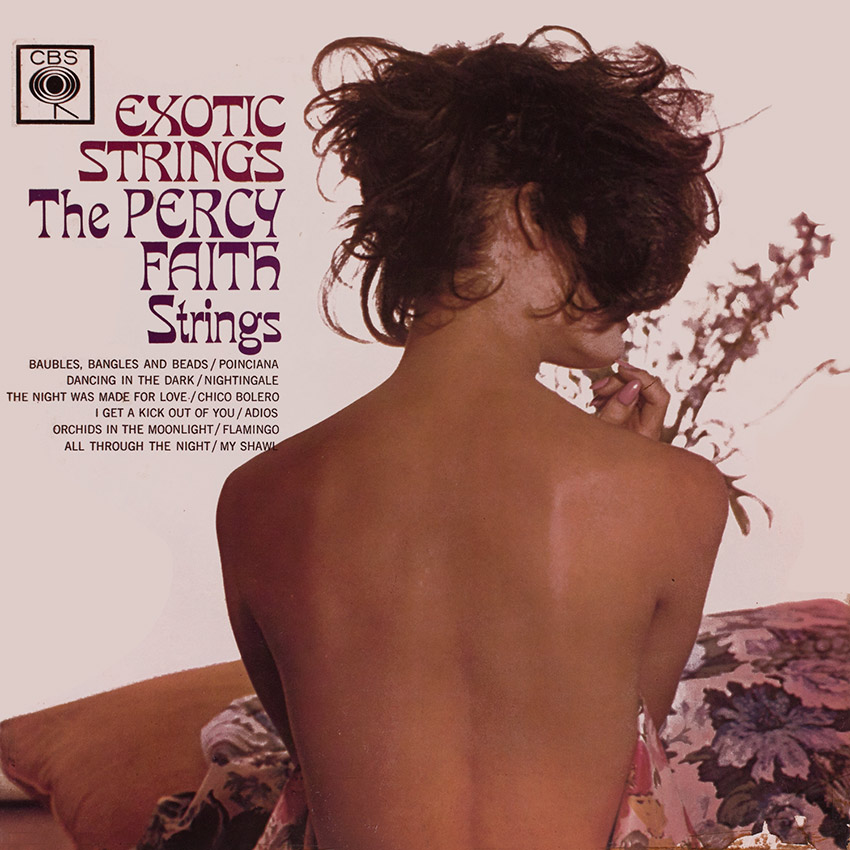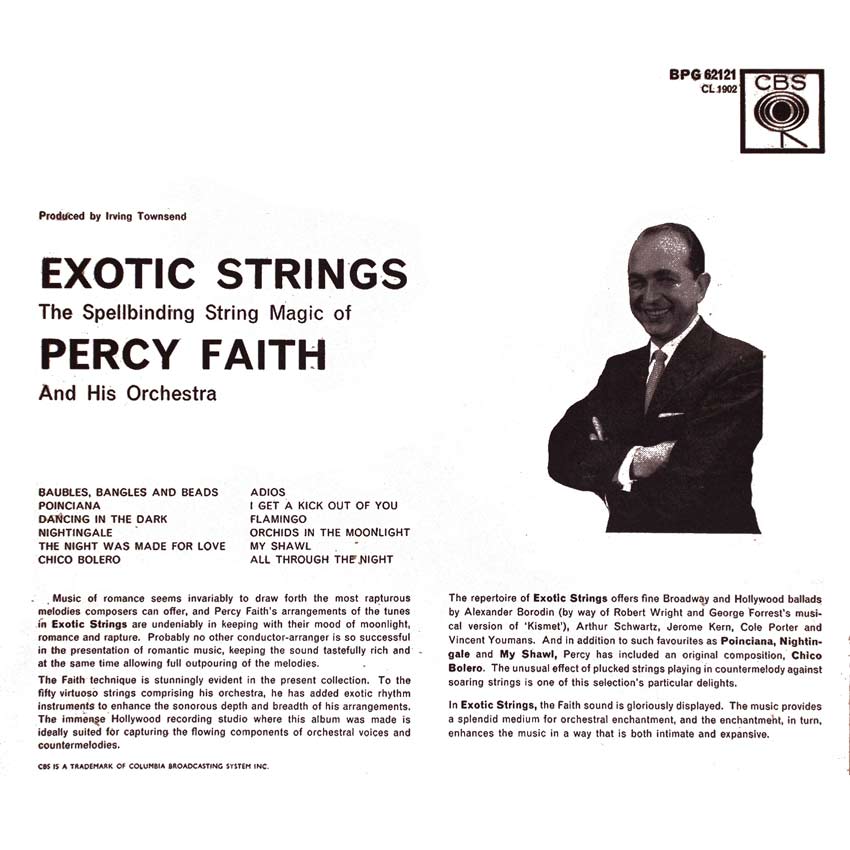Ted Heath And His Music – Big Band Bash
Sleeve Notes:
The impact of Ted Heath’s first “phase 4” stereo album, “Big Band Percussion”, created a demand for more music similarly presented by England’s big band boss—and here it is, ‘Big Band Bash”, destined to follow in the footsteps of the last LP straight to the best-selling charts.
This entire LP was committed to the unique arranging talents of Johnny Keating. He has striven imaginatively and successfully to carry the big band sound and concept to the requirements of “phase 4” stereo which needs a special accommodation. The programme is spiced with several moods, but consistently there is the kind of writing for which big bands were made. “Hindustan”, “Cherokee” and “Out of Nowhere”—to single out a few—are masterfully arranged by Keating.
SIDE 1 1. HINDUSTAN (Wallace; Weeks)
With a brilliant and bright anacrusis from the trumpets (right), we swing into this big band classic with free-flowing ease. The brass (right). rhythm and saxes (left) wheel it along to a magnificently performed duet between two tenor saxes (one left and one right). In a splendidly realized section of the arrangement we hear, behind the saxophones’ passage, flutes and trumpets (right), trombones (right) and driving rhythm (left) all weaving independent threads into a richly textured pattern—a beautiful piece of big band scoring.
2. A-TISKET A-TASKET (Fitzgerald; Feldman) The curious needle-point chatter of the tight-skinned bongos is heard. with a crisp precision on the left; and setting off the latinate patter is the contrasting weight of the heavily struck timpani and sharp-edged sparkle of the finger cymbal (right). Intoning the melody is the piercing flute (right) and grumpy baritone sax (left). Occasional thick and humorous grunts are heard from the full-bodied bass trombone (right). From there, bright and playfully, “Tisket” moves happily along in a sprightly arrangement.
3. I DON’T KNOW WHY (Turk; Ahlert) The marimba speaks mellowly but firmly from the right as the rhythm is ushered in gently by a silken vibraphone run (left). The pattern breaks momentarily when the string bass is heard from (left). The saxophones on the left play the melody at the second chorus, and to that fine satin finish is added Be sound of the “bodiful trombones (right). Two muted trumpets are heard adding a bit of colour as well (right).The work is paced and prepared to meet an impressive flow of sound at the point of climax just before the return of the marimba (right)who recalls the pattern of the introduction and brings the title to rest.
4. CAPUCCINA (Masser., Sherman; Pallavicini) There is something prettily naive about the mandolin figure which is heard on the left; and, as one would imagine such a figure to be short-lived in a Heath LP, it is soon stopped by the intrusion of an exciting walking bass line (left) whose mood is jazzily supported by the sure hand of the drummer (right). The guitar carries the melody (left) as the mood is percussively punctuated by the light chords on the piano (also left). Briefly joined by the vibes (left), the melody passes to the saxophone section on the left. Slowly and with measured planning the trumpets and trombones (right) come into the picture as the whole arrangement moves toward a frenzied climax. 5. HERNANDO’S HIDEAWAY (Adler; Ross) Spook figures haunt the hideaway left and right as the piece opens up a barrel of fun colours and sounds. Instruments and effects are apparent throughout this title as the music jumps about between speakers. This is good listening fun.
SIDE 2 1. CHEROKEE (Noble) Tom-toms herald the war council (left and right) and are broken temporarily by saxes (left) and flutes (right). The tom-tom chatter continues behind the melody (played on the left by the bass clarinet and baritone sax.) Soon the fltites as flying arrows are hurled out of the right speaker. As Mr. Heath said at the session: “the saxes are cowboys and the flutes are the Indian arrows coming at them.” That done, the whole Heath band begins to swing like a band of winning Indians in this great, wide-open and bust arrangement.
2. HARLEM NOCTURNE (Hagen) The delicate tinkle of a finger cymbal and soft tapping of the bongos (right) strike a mood of midnight mystery as the walking bass (left) soft cymbal and muted trombones (right) weave a background pattern in which the melody-playing alto flute is darkly set. The saxophone section (left) and brass (right) each have a turn at this lovely melody before the plaintive solo sound of the alto sax is heard (left) against which a pleasant obbligato flute figure is moving. The mood of the piece, sustained by the spell of intrigue which the rhythm sets, is constant to the end.
3. SABRE DANCE (Khachaturian; Roberts; Lee)• Swinging and driving as ever a big band was meant to, this title gets off the ground brightly and sharply with the trombones hammering left, the trumpets attacking right, and the saxophones driving from the left. With a clean, precise performance, the arrangement moves this famous Khachaturian opus home dramatically.
4. IN A PERSIAN MARKET (Ketelbey) A magic carpet flys (right to left) across the market place, and the plaza comes to life in the form of a grumpy, hoarse bass clarinet and baritone sax (left). Soon awakened are the less sleepy time-keeping skulls (right) and the sharp percussive xylophone and piccolo (also right). A young Arab is heard selling his wares (right) and a chorus of saxophones sell every bit as loudly from the left. Soon the brass choir (right) gets into the act and before you know it the whole market place is jumping in a magnificent display of swing playing. The picture fades at the end amid the hub-bub of the market.
5. CLOPIN-CLOPANT (Coque., Duclan; Goell, Rome) A bit of French sentimentality is heard from on the right in the form of the balmusette. The horse cart is heard clip-clopping along (also right). Alternately the famous melody is sounded by the flute (right), contra-bass clarinet (left) and the guitar (left). Following a break into latin tempo, the opening pattern is again recalled as the horse clip-clops out of sight.
6. OUT OF NOWHERE (Heyman; Green) There would be such to call to your attention in this title: the various colours you hear emanating from your separate speakers, the instrumental patterns effected by the different band choirs, etc. But at the heart of this title is its arrangement and structure, its tonal blends and fine performance. The Heath band has never sounded better and Johnny Keating has turned in one of his finest scores.
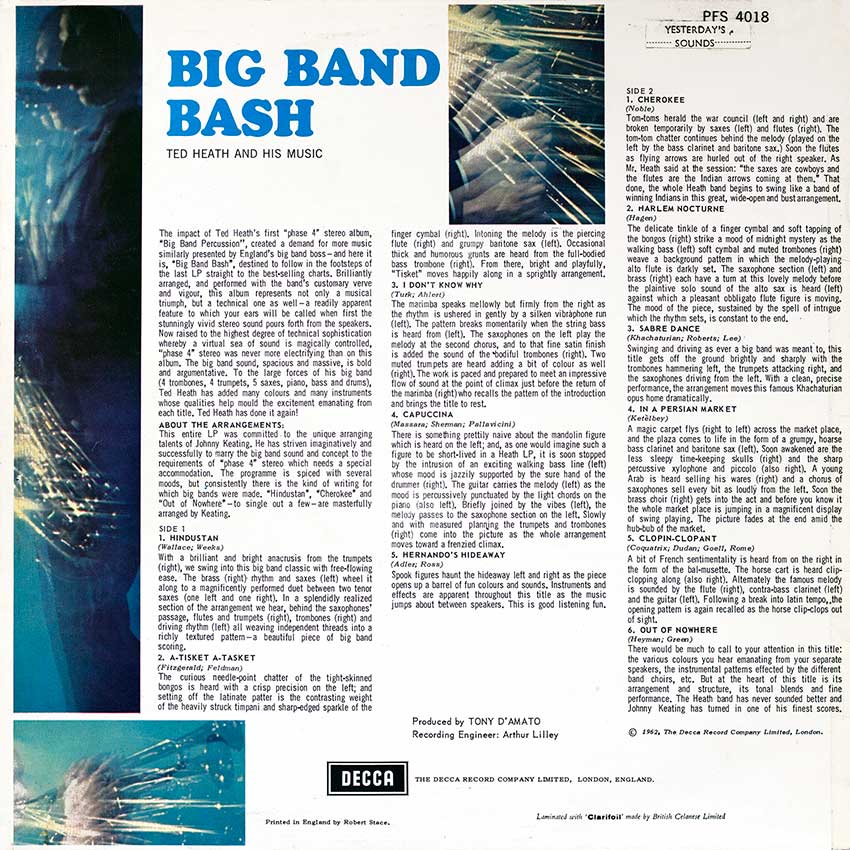
Label: Decca PFS 4018



